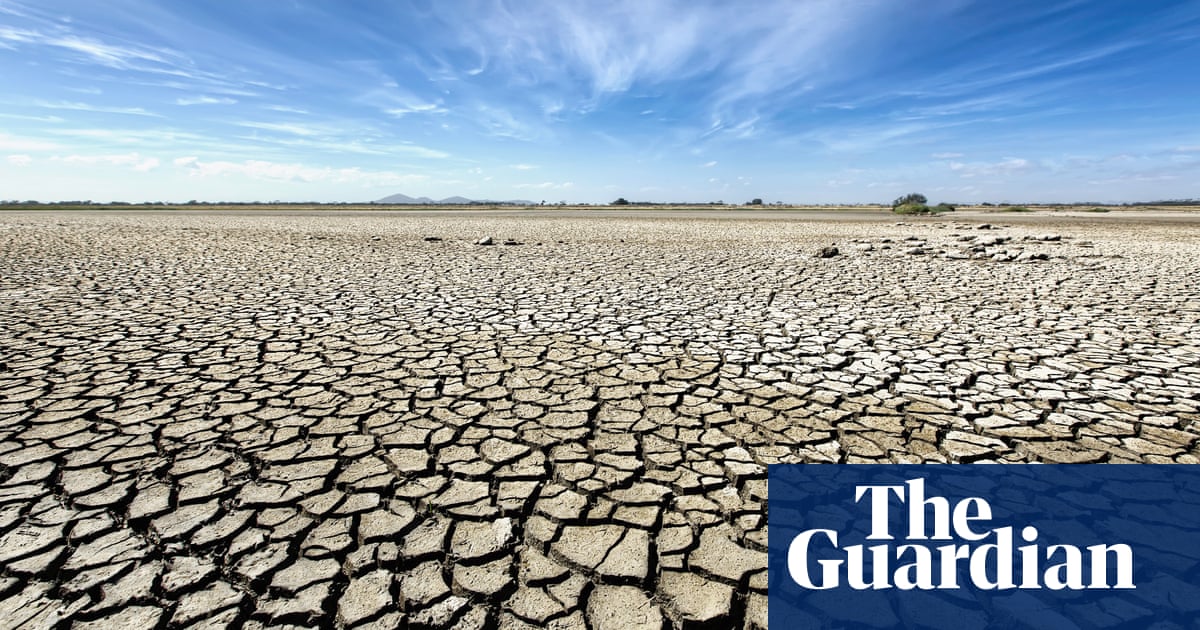The degradation of the world’s soils and landscapes is threatening human life, and must be addressed as a matter of urgency, the government of Saudi Arabia has said.
Neglect of the land is wiping trillions of dollars from global economies, hampering agricultural production, disrupting water supplies, threatening children with poor nutrition, and destroying vital ecosystems, according to the country’s deputy environment minister.
Land degradation, and ways to combat the problem, will come into sharp focus at a global summit to be held in the nation’s capital, Riyadh, in December.
The conference of the parties (Cop) to the UN convention on combating desertification (CCD), which takes place every two years, is often an overlooked international meeting, sparsely attended compared with the Cops on climate and on biodiversity.
But as this year’s host, Saudi Arabia is planning to put the issue of land management in the spotlight, inviting senior ministers and heads of government from around the world, in an attempt to bring in some financial muscle. In so doing, the country, often accused of obstructive behaviour at climate Cops, will offer an unusual glimpse of its own environmental priorities, in a world increasingly imperilled by global heating and related water shortages.
Osama Faqeeha, deputy environment minister in the kingdom’s government, said people should not be misled by the term desertification, which could appear a narrow concern limited to arid countries. In fact, the CCD should be understood to cover all of the globe’s vulnerable lands, and efforts to rescue and protect them.
“This Cop is about land degradation, land preservation and drought,” he told the Guardian, in a rare interview. “It’s very important for water security, food security, biodiversity, and human community. We need to go back to basics and remind the world of this connection we all have with the land.”
“Desertification tells us that we have not exercised good land management,” said Faqeeha, who will take a prominent role assisting the Cop president designate, the Saudi environment and water minister, Abdulrahman al-Fadley. “We need to take a comprehensive view. Land degradation is universal. More than 2bn hectares globally are degraded. Already, 55% of countries report land degradation, and there is not enough reporting … The cost of land degradation is a staggering $6tn a year.”
On current trends, he warned, the amount of land affected could triple by 2050, without strong action to restore fertility and prevent land from being over-exploited.
The impacts can be felt not just on the loss of species, but also on human nutrition, he added. Children eating the same amount of food now as a few decades ago are receiving far fewer of the vital nutrients they need, because degraded soils produce food with less nutritional value.
The UNCCD was forged in Rio in 1992, alongside the UN framework convention on climate change, and the UN convention on biodiversity, and each hold separate Cops – annually, in the case of the climate, and every other year for the other two. Cop29 on the climate will be held in Azerbaijan from 11 November, while Cop16 on biodiversity finishes in Colombia this week. Their findings will feed into CCD Cop16 in Riyadh. Of the three Cops, it has been “the least understood”, said Faqeeha.
Harjeet Singh, global engagement director at the Fossil Fuel Non-Proliferation Treaty Initiative, said the Saudi government must address the climate at the Riyadh talks. “As droughts, land degradation, and desertification continue to intensify due to rising temperatures, particularly in vulnerable regions like the Middle East, aligning climate action with sustainable land management must be central to the discussions,” he said.
“Saudi Arabia will face significant international scrutiny over whether it will take bold action by committing to phase out fossil fuels or restrict its efforts to promoting tree-planting initiatives and land restoration practices.”
But Saudi is reluctant to link the CCD talks to the climate, despite the obvious interaction between desertification and the massive changes to the world’s hydrological cycles that are wreaked by the climate crisis, and that are becoming increasingly obvious in the form of extreme weather, heatwaves, droughts and floods. Saudi’s climate responsibilities, as holder of the world’s biggest oil reserves, will not form part of the discussion.
after newsletter promotion
“This Cop is not about Saudi Arabia, it’s about the whole world and global challenges,” Faqeeha said. “Other countries have an equal voice – we are just a facilitator.”
Meanwhile at the climate summit this year, nations will discuss the need to raise trillions of dollars for developing countries to cut their greenhouse gas emissions and adapt to the impacts of extreme weather. Saudi, with its extraordinary oil wealth, is still classed as a developing country at the climate talks. But for the first time, Saudi and fellow petrostates will be asked by developed country leaders at Cop29 to contribute to funds for the poor world – a demand the government is likely to refuse.
Faqeeha insisted these questions were not connected to the UNCCD Cop. He said the key source of funds for protecting lands against degradation must be the private sector, which would be extensively represented by investors and business leaders at the Riyadh meeting.
Faqeeha said Saudi was a good place to hold a desertification Cop. “This region is highly impacted by desertification,” he said. “It makes sense to hold this Cop in an arid country.” He said the kingdom’s government had already embarked on a series of initiatives to restore land, protect water sources and conserve biodiversity.
For instance, the country is working to preserve a system of terraces on a mountain range parallel to the Red Sea, where rainfall is harvested. The Saudi Green Initiative has a target of restoring 40m hectares of degraded land by 2030.
Just as many countries agreed at the biodiversity Cop16 in Cali, Colombia, to conserve at least 30% of their land, Faqeeha hopes that countries will make commitments to restore their areas of highly degraded land at the CCD Cop. “Not all countries have targets yet on restoring lands,” he noted. “And we also need to prevent degradation, by better land management.”









